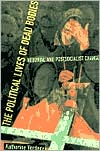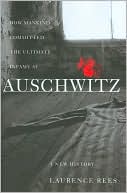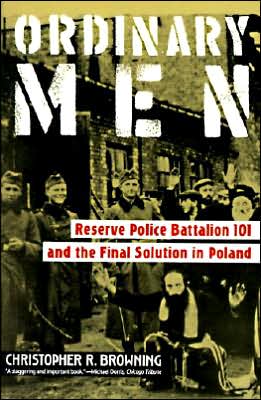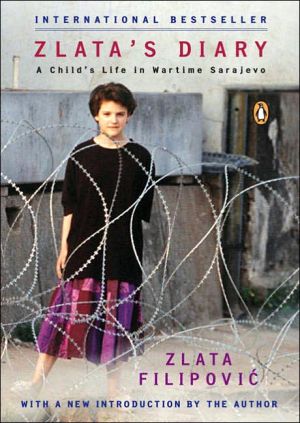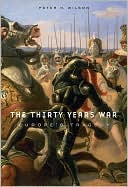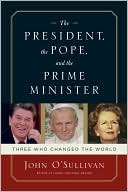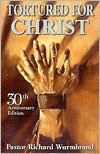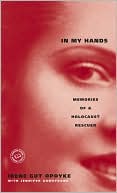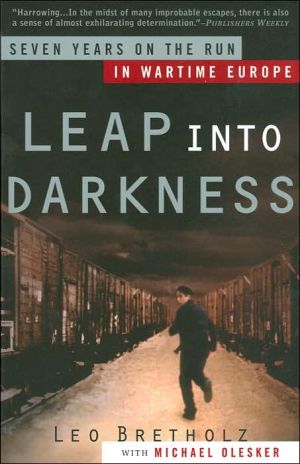The Political Lives of Dead Bodies: Reburial and Postsocialist Change
Since 1989, scores of bodies across Eastern Europe have been exhumed and brought to rest in new gravesites. Katherine Verdery investigates why certain corpses -- the bodies of revolutionary leaders, heroes, artists, and other luminaries, as well as more humble folk -- have taken on a political life in the turbulent times following the end of Communist Party rule, and what roles they play in revising the past and reorienting the present. Enlivening and invigorating the dialogue on...
Search in google:
Since 1989, scores of bodies across Eastern Europe have been exhumed and brought to rest in new gravesites. Verdery investigates why certain corpses have taken on political life in the turbulent times following the end of Communist Party rule. Mark von Hagen Verdery has reaffirmed her standing as one of our preeminent analysts of East European and post-Soviet politics, society, and culture.
\ \ \ \ \ Chapter One\ Dead people belong to the live people who claim them most obsessively.\ —JAMES ELLROY\ \ \ Dead Bodies Animate the Study of Politics\ \ \ I n my introduction I revealed a lively politics around dead bodies during the 1990s in the former Soviet bloc. My task now is to indicate what I plan to make of it. As I already noted, I approach the task mindful of its complexity and unwilling to offer a single explanation of the varied instances I have presented. What I offer, instead, is a broad framework for thinking about material of this kind, one that emphasizes the universes of meaning within which postsocialist politics takes place.\ I see politics as a form of concerted activity among social actors, often involving stakes in particular goals. These goals may be contradictory, sometimes only quasi-intentional; they can include making policy, justifying actions taken, claiming authority and disputing the authority claims of others, and creating or manipulating the cultural categories within which all of those activities are pursued. Politics is not restricted to the actions of political leaders but can be engaged in by anyone, although such actors often seek to present their goals as in some sense public ones. That is, some of the work of politics consists of making claims that create an issue as a "public" issue. Political actors pursue their activities in arenas both large and small, public and private; the overlap and interference of the arenas shape what goes on in any one of them. Becausehuman activity nearly always has affective and meaningful dimensions and takes place through complex symbolic processes, I also view politics as a realm of continual struggles over meanings, or signification. Therefore, I stress those aspects in my discussion, and I find dead bodies a particularly good vehicle for doing so.\ Politics happens in contexts. Because the context of postsocialist politics is unusually momentous, I preface my discussion with a brief sketch of what I think it is. I start with the assumption that for the last two decades or so, we have been both creating and living through an epochal shift in the global economy. Among its elements is a change in the operation of capitalism, responding to a global recession evident as of the early 1970s. A large literature, beyond my purposes here, has arisen around this transformation. Sometimes called a change to "flexible specialization," it has produced a massive shift in the tectonic plates of the world economy; one sign of that was the 1989 collapse of Communist Party rule in Eastern Europe, and soon thereafter in the Soviet Union. I have suggested elsewhere how I think that happened, underscoring processes internal to the Soviet system that connected it more fully with international capital flows and, as a result, altered both the form of socialist political economies and their place in global capitalism.\ Although I am not alone in seeing the postsocialist transformation in such earthshaking terms, my view is far from universal. Some observers find increasing evidence that as the dust from 1989 settles, persistent continuities with the socialist order are at least as striking as disruptions of it. The centralized economy and socialist property rights, in particular, have proved highly resistant to change. Nevertheless, much of what set socialism most clearly apart from other forms of political economy was wholly compromised after 1989: the Communist Party's relative monopoly over the formal political sphere, the degree of central control over the budget and over economic redistribution, the mechanisms that sustained socialist property as the dominant form, and the illusion of the party-state's omnipotence (brought into question by Poland's Solidarity in 1980 but smashed altogether in 1989). Even if some of these features continue in postsocialist societies, they no longer index the distinctive cluster of institutions that was "actually existing socialism."\ Moreover, the context in which those features operate has changed. The various barriers that socialism had fumblingly erected no longer insulate it from the "outside." Global capitalism exerts its pressure particularly against the institutions by which socialism defined itself as noncapitalist, such as party and state forms, property arrangements, and openness to market forces. Although the results of outside pressure will not necessarily be "transitions to capitalism," the context in which we should assess postsocialism's emerging forms is—far more than before—the international one of global capital flows. When I speak of a shift in the world's "tectonic plates," then, I do not mean that a plate called "socialism" has buckled before one called "capitalism"; I mean, rather, that an alteration in the entire system of plate movements compels us to reconsider the dynamics in any one part of it. For the postsocialist part, those dynamics affect the full gamut of politicoeconomic and sociocultural life.\ Where do dead bodies figure in this? I believe they offer us some purchase on the cultural dimension, in the anthropological sense, of postsocialist politics. (By this I do not mean the so-called concept of political culture, as underspecified as it is overused.) They help us to see political transformation as something more than a technical process—of introducing democratic procedures and methods of electioneering, of forming political parties and nongovernmental organizations, and so on. The "something more" includes meanings, feelings, the sacred, ideas of morality, the nonrational—all ingredients of "legitimacy" or "regime consolidation" (that dry phrase), yet far broader than what analyses employing those terms usually provide. Through dead bodies, I hope to show how we might think about politics, both as strategies and maneuvering and also as activity occurring within cultural systems.\ Hinted at in my wording is a view similar to Max Weber's: that the pursuit of meaning is at the heart of human activity, and that social analysis aims to understand meanings rather than to explain causes. In his work, Weber described some overarching processes he believed characteristic of modernity, such as rationalization, secularization, and the "disenchantment" of the world. In hands other than his, however, such concepts have tended to desiccate how politics is treated. I prefer, in examining postsocialist politics, to speak instead of its enchantment, so as to enliven politics with a richer sense of what it might consist of.\ In speaking of enchantment or enlivening, I have two related things in mind. The first is an analytic one: I hope to show how we might animate the study of politics in general, energizing it with something more than the opinion polls, surveys, analyses of "democratization indices," and game-theoretic formulations that dominate so much of the field of comparative politics? Where else, I ask, might we look for "politics," in perhaps unexpected places that arrest the imagination? The second sense is a descriptive one, concerning the specific forms that political action is taking in the postsocialist world. Do we find there the ritual murders, pyramid schemes, and images of zombies and clandestinely circulating body parts described, for example, by Jean and John Comaroff in their work on postapartheid South Africa? Perhaps not, but we do find UFO movements in Armenia, invocations of the devil as a source of wealth in Transylvania, and radio-based mass hypnotism in Russia. My two senses of enchantment (the analytic and the descriptive) are interconnected: we more easily broaden our conception of "the political" in the face of empirical surprises like those.\ The analytic and descriptive senses are also, however, importantly distinct. In trying to animate or enchant the study of politics, I am not saying that secular socialism dried out a politics that must now be reinfused with meaning (or even "reborn," as some would have it). To the contrary: communist parties strove continually, as Jowitt has argued, to establish their sacrality and charisma. Rather, I am protesting that perhaps from too much rational choice theory, our standard conception of "the political" has become narrow and flat. Therefore, I propose turning things around: instead of seeing nationalism, for instance, in the usual way—as a matter of territorial borders, state-making, "constructionism," or resource competition—I see it as part of kinship, spirits, ancestor worship, and the circulation of cultural treasures. Rather than speak of legitimacy, I speak of reordering the meaningful universe. I present the politics of corpses as being less about legitimating new governments (though it can be that, too) than about cosmologies and practices relating the living and the dead. And I see the rewriting of history that is obviously central to dead-body politics as part of a larger process whereby fundamental changes are occurring in conceptions of time itself. These are the kinds of things I mean when I speak of analytically enlivening or enchanting politics.\ Investigating the political lives of dead bodies, then, enriches our sense of the political while providing a window onto its specific forms in the transformation of socialism. The rest of this book offers some examples of how such an analysis might proceed. A number of themes contribute to the enlivened sense of politics that I am advocating, and most of this chapter is devoted to discussing them. Before I continue, however, I believe I must raise a difficult question, albeit with only tentative answers: Why dead bodies? What is it about a corpse that seems to invite its use in politics, especially in moments of major transformation?\ \ \ WHY DEAD BODIES?\ \ \ To ask this question exposes one to a flourishing literature on "the body," much of it inspired by feminist theory and philosophy, as well as potentially to poststructuralist theories about language and "floating signifiers." I will not take up the challenge of this literature here but will limit myself instead to some observations about bodies as symbolic vehicles that I think illuminate their presence in postsocialist politics.\ Bones and corpses, coffins and cremation urns, are material objects. Most of the time, they are indisputably there, as our senses of sight, touch, and smell can confirm. As such, a body's materiality can be critical to its symbolic efficacy: unlike notions such as "patriotism" or "civil society," for instance, a corpse can be moved around, displayed, and strategically located in specific places. Bodies have the advantage of concreteness that nonetheless transcends time, making past immediately present. Their "thereness" undergirded the founding and continuity of medieval monasteries, providing tangible evidence of a monastery's property right to donated lands. That is, their corporeality makes them important means of localizing a claim (something they still do today, as I suggest in chapter 3). They state unequivocally, as Peter Brown notes, "Hic locus est." This quality also grounded their value as relics.\ The example of relics, however, immediately complicates arguments based on the body's materiality: if one added together all the relics of St. Francis of Assisi, for instance, one would get rather more than the material remains of one dead man. So it is not a relic's actual derivation from a specific body that makes it effective but people's belief in that derivation. In short, the significance of corpses has less to do with their concreteness than with how people think about them. A dead body is meaningful not in itself but through culturally established relations to death and through the way a specific dead person's importance is (variously) construed. Therefore, I turn to the properties of corpses that make them, in Lévi-Strauss's words, "good to think" as symbols.\ Bodies—especially those of political leaders—have served in many times and places worldwide as symbols of political order. Literature in both historiography and anthropology is rife with instances of a king's death calling into question the survival of the polity. More generally, political transformation is often symbolized through manipulating bodies (cutting off the head of the king, removing communist leaders from mausoleums). We, too, exhibit this conception, in idioms such as "the body politic."\ A body's symbolic effectiveness does not depend on its standing for one particular thing, however, for among the most important properties of bodies, especially dead ones, is their ambiguity, multivocality, or polysemy. Remains are concrete, yet protean; they do not have a single meaning but are open to many different readings. Because corpses suggest the lived lives of complex human beings, they can be evaluated from many angles and assigned perhaps contradictory virtues, vices, and intentions. While alive, these bodies produced complex behaviors subject to much debate that produces further ambiguity. As with all human beings, one's assessment of them depends on one's disposition, the context one places them in (brave or cowardly compared with whom, for instance), the selection one makes from their behaviors in order to outline their "story," and so on. Dead people come with a curriculum vitae or résumé—several possible résumés, depending on which aspect of their life is being considered. They lend themselves to analogy with other people's résumés. That is, they encourage identification with their life story, from several possible vantage points. Their complexity makes it fairly easy to discern different sets of emphasis, extract different stories, and thus rewrite history. Dead bodies have another great advantage as symbols: they don't talk much on their own (though they did once). Words can be put into their mouths—often quite ambiguous words—or their own actual words can be ambiguated by quoting them out of context. It is thus easier to rewrite history with dead people than with other kinds of symbols that are speechless.\ Yet because they have a single name and a single body, they present the illusion of having only one significance. Fortifying that illusion is their materiality, which implies their having a single meaning that is solidly "grounded," even though in fact they have no such single meaning. Different people can invoke corpses as symbols, thinking those corpses mean the same thing to all present, whereas in fact they may mean different things to each. All that is shared is everyone's recognition of this dead person as somehow important. In other words, what gives a dead body symbolic effectiveness in politics is precisely its ambiguity, its capacity to evoke a variety of understandings. Let me give an example.\ On June 16, 1989, a quarter of a million Hungarians assembled in downtown Budapest for the reburial of Imre Nagy, Hungary's communist prime minister at the time of the 1956 revolution. For his attempts to reform socialism he had been hanged in 1958, along with four members of his government, and buried with them in unmarked graves, without coffins, facedown. From the Hungarian point of view, this is a pretty ignominious end. Yet now he and those executed with him were reburied, faceup in coffins, with full honors and with tens of thousands in attendance. Anyone watching Hungarian television on that June 16 would have seen a huge, solemn festivity, carefully orchestrated, with many foreign dignitaries as well as three Communist Party leaders standing near the coffins (the Communist Party of Hungary had not yet itself become a corpse). The occasion definitely looked official (in fact it was organized privately), and it rewrote the history—given only one official meaning for forty years—of Nagy's relation to the Hungarian people (see plates 14-15).\ Although the media presented a unified image of him, there was no consensus on what Nagy's reburied corpse in fact meant. Susan Gal, analyzing the political rhetoric around the event, finds five distinct clusters of imagery, some of it associated with specific political parties or groups: (1) nationalist images emphasizing national unity around a hero of the nation (nationalist parties soon found these very handy); (2) religious images (which could be combined with the nationalist ones) emphasizing rebirth, reconciliation, and forgiveness, and presenting Nagy as a martyr rather than a hero; (3) various images of him as a communist, as the first reform communist, and as a true man of the people, his reburial symbolizing the triumph of a humane socialist option and the death of a cruel Stalinist one; (4) generational images, presenting him as the symbol of the younger generation whose life chances had been lost with his execution (this group would soon become the Party of Young Democrats); and (5) images associated with the ideas of truth, conscience, and rehabilitation, so that his reburial signified clearing one's name and telling the story of one's persecution—an opportunity to rewrite one's personal history. (That some people presented communist Prime Minister Nagy as an anti-communist hero shows just how complex his significances could be.)\ Perhaps attendance at Nagy's funeral was so large, then, because he brought together diverse segments of the population, all resonating differently to various aspects of his life. And perhaps so many political formations were able to participate because all could legitimate a claim of some kind through him, even though the claims themselves varied greatly. This, it seems to me, is the mark of a good political symbol: it has legitimating effects not because everyone agrees on its meaning but because it compels interest despite (because of?) divergent views of what it means.\ Aside from their evident materiality and their surfeit of ambiguity, dead bodies have an additional advantage as symbols: they evoke the awe, uncertainty, and fear associated with "cosmic" concerns, such as the meaning of life and death. For human beings, death is the quintessential cosmic issue, one that brings us all face to face with ultimate questions about what it means to be—and to stop being—human, about where we have come from and where we are going. For this reason, corpses lend themselves particularly well to politics in times of major upheaval, such as the postsocialist period. The revised status of religious institutions in postsocialist Eastern Europe reinforces that connection, for religions have long specialized in dealing with ultimate questions. Moreover, religions monopolize the practices associated with death, including both formal notions of burial and the "folk superstitions" that all the major faiths so skillfully integrated into their rituals. Except in the socialist period, East Europeans over two millennia have associated death with religious practices. A religious reburial nourishes the dead person both with these religious associations and with the rejection of "atheist" communism. Politics around a reburied corpse thus benefits from the aura of sanctity the corpse is presumed to bear, and from the implicit suggestion that a reburial (re)sacralizes the political order represented by those who carry it out.\ Their sacred associations contribute to another quality of dead bodies as symbols: their connection with affect, a significant problem for social analysis. Anthropologists have long asked, Wherein lies the efficacy of symbols? How do they engage emotions? The same question troubles other social sciences as well: Why do some things and not others work emotionally in the political realm? It is asked particularly about symbols used to evoke national identifications; Benedict Anderson, for instance, inquires why national meanings command such deep emotional responses and why people are "ready to die for these inventions." The link of dead bodies to the sacred and the cosmic—to the feelings of awe aroused by contact with death—seems clearly part of their symbolic efficacy.\ One might imagine that another affective dimension to corpses is their being not just any old symbol: unlike a tomato can or a dead bird, they were once human beings with lives that are to be valued. They are heavy symbols because people cared about them when they were alive, and identify with them. This explanation works best for contemporary deaths, such as the Yugoslav ones I discuss in chapter 3. Many political corpses, however, were known and loved in life by only a small circle of people; or—like Serbia's Prince Lazar or Romania's bishop Inochentie Micu (whose case I examine in the next chapter)—they lived so long ago that any feelings they arouse can have nothing to do with them as loved individuals. Therefore I find it insufficient to explain their emotional efficacy merely by their having been human beings.\ Perhaps more to the point is their ineluctable self-referentiality as symbols: because all people have bodies, any manipulation of a corpse directly enables one's identification with it through one's own body, thereby tapping into one's reservoirs of feeling. In addition (or as a result), such manipulations may mobilize preexisting affect by evoking one's own personal losses or one's identification with specific aspects of the dead person's biography. This possibility increases wherever national ideologies emphasize ideas about suffering and victimhood, as do nearly all in Eastern Europe. These kinds of emotional effects are likely enhanced when death's "ultimate questions," fear, awe, and personal identifications are experienced in public settings—for example, mass reburials like those of Imre Nagy or the Yugoslav skeletons from World War II.\ Finally, I believe the strong affective dimension of dead-body politics also stems from ideas about kinship and proper burial. Kinship notions are powerful organizers of feeling in all human societies; other social forms (such as national ideologies) that harness kinship idioms profit from their power. Ideas about proper burial often tie kinship to cosmic questions concerning order in the universe, as well. I will further elaborate on this suggestion later in this chapter and in chapter 3.\ Dead bodies, I have argued, have properties that make them particularly effective political symbols. They are thus excellent means for accumulating something essential to political transformation: symbolic capital. (Given the shortage of investment capital in postsocialist countries and the difficulties of economic reform, perhaps the symbolic variety takes on special significance!) The fall of communist parties devalued much of what had served as political or symbolic capital, opening a wide field for competition in which success depends on finding and accumulating new capital resources. Dead bodies, in short, can be a site of political profit. In saying this, I am partly talking about the process of establishing political legitimacy, but by emphasizing symbolic capital I mean to keep at the forefront of my discussion the symbolic elements of that process.\ \ \ REORDERING WORLDS OF MEANING\ \ \ In considering the symbolic properties of corpses, I have returned repeatedly to their "cosmic" dimension. I do so because I believe this emphasis suits what I observed earlier about the significance of the events of 1989: they mark an epochal shift in the international system, one whose effects pose fundamental challenges to people's hitherto meaningful existence. This is true worldwide, but especially in the former socialist bloc. All human beings act within certain culturally shaped background expectations and understandings, often not conscious, about what "reality" is. One might call these their sense of cosmic order, or their general understanding of their place in the universe. By this I mean, for instance, ideas about where people in general and our people in particular came from; who are the most important kinds of people, and how one should behave with them; what makes conduct moral or immoral; what are the essential attributes of a "person"; what is time, and how does it flow (or not); and so on.\ Following current anthropological wisdom, however, I do not see these cosmic conceptions strictly as "ideas," in the cognitive realm alone. Rather, they are inseparable from action in the world—they are beliefs and ideas materialized in action. This is one way (the way I prefer) of defining culture. Unfortunately, nearly all nonanthropologists understand "culture" as cognition, ideas—a meaning I want to avoid. Hence, instead of using "culture," I speak of "worlds of meaning" or simply "worlds" (though not in the sense of "lifeworld" that is specific to phenomenology and the recent work of Jürgen Habermas). "World," as I intend it, seeks to capture a combination of "worldview" and associated action-in-the-world, people's sense of a meaningful universe in which they also act. Their ideas and their action constantly influence one another in a dynamic way. In moments of major transformation, people may find that new forms of action are more productive than the ones they are used to, or that older forms make sense in a different way, or that ideals they could only aspire to before are now realizable. Such moments lead to reconfiguring one's world; the process can be individual and collective, and it is often driven by the activities of would-be elites (in competition with one another).\ Students of the demise of Soviet-style party-states have tended to pose the problems of postsocialist transformation as creating markets, making private property, and constructing democracy. This frame permits two things: one can absorb the postsocialist examples into a worldwide "transition to democracy," and one can emphasize technical solutions to the difficulties encountered ("shock therapy," writing constitutions, election-management consulting, training people in new ways of bookkeeping, etc.). I believe the postsocialist change is much bigger. It is a problem of reorganization on a cosmic scale, and it involves the redefinition of virtually everything, including morality, social relations, and basic meanings. It means a reordering of people's entire meaningful worlds.\ Although my phrasing may seem exaggerated, without this perspective I doubt that we can grasp the magnitude of what 1989 has meant for those living through it: a rupture in their worlds of meaning, their sense of cosmic order. The end of Party rule was a great shock to people living in the former socialist countries. This was not because everyone had internalized the Communist Party's own cosmology and organization of things: far from it. The history of Party rule throughout the region was a long struggle between what Party leaders wanted and what everyone else was prepared to live with. Practices, expectations, and beliefs quite antithetical to the Party's dictates jostled with those the Party promoted. Nevertheless, daily life proceeded within or against certain constraints, opportunities, and rules of the game that the political system had established, and these formed a set of background expectations framing people's lives.\ The events of 1989 disrupted these background expectations in ways that many people in the region found disorienting (even if some of them also found therein new opportunities). They could no longer be sure what to say in what contexts, how to conduct politics with more than one political party, how to make a living in the absence of socialist subsidies and against spiraling inflation, and so on. They found their leisurely sense of time's passage wholly unsuited to the sudden crunch of tasks they had to do. Moreover, their accustomed relations with other people became suddenly tense. Quarrels over property, for example, severed long-amicable bonds between siblings and neighbors; new possibilities for enrichment altered friendships; and increasing numbers of parents saw their plans for security and retirement evaporate as more of their children headed abroad. In these circumstances, people of all kinds could no longer count on their previous grasp of how the world works. Whether consciously or not, they became open to reconsidering (either on their own or with the help of political, cultural, and religious elites) their social relations and their worlds of meaning. This is what I mean when I speak of reordering meaningful worlds. I believe dead-body politics plays a part in that process, and that to examine it will clarify my project of animating the study of politics.\ My conceptualization here resonates with Durkheim's, particularly the Durkheim of the Elementary Forms of the Religious Life, which is among other things a treatise on the possibilities for moral regeneration in human societies. The resemblance is not fortuitous. First, Durkheim wrote during a time of great moral ferment in France; his work aimed expressly to comment upon that ferment and contribute to quieting it. His situation then reminds one of the 1990s postsocialist situation. Second (and for that very reason), some scholars consider Durkheim the only major theorist apt for thinking about political and moral renewal. Although I gladly second him in that endeavor, and although some of my proposals in this book (such as the theme of proper burial) hint at a Durkheimian reflex, I part company with him in regard to the conscience collective; I look not for shared mentalities but for conflict among groups over social meanings.\ Reordering worlds can consist of almost anything—that's what a "world" means. To reorder worlds of meaning implicates all realms of activity: social relations, political ideas and behavior, worldviews, economic action. Far more domains of life might be included under this rubric than I have time to explore, and dead bodies can serve as loci for struggling over new meanings in any of them. For my purposes in this book, I will emphasize their role in the following areas: struggles to endow authority and politics with sacrality or a "sacred" dimension; contests over what might make the postsocialist order a moral one; competing politicizations of space and time; and reassessments of identities (especially national ones) and social relations. I discuss a fifth possible domain central to postsocialist transformation—property relations—together with the others, for it enters into all of them. Yet another domain that figures centrally in Eastern Europe's transformation but cannot be treated here is the obverse of death, namely [re]birth. The politics of abortion, for instance, has agitated nearly all postsocialist countries, as pro-natalist nationalists strive for demographic renewal of their nations following what they see to be socialism's "murderous" abortion policies.\ In each of these domains, dead bodies serve as sites of political conflict related to the process of reordering the meaningful universe. The conflicts involve elites of many kinds and the populations they seek to influence, in the altered balance of power that characterizes the period since 1989. I will explain what I intend by these rubrics, briefly for the first three and at greater length for the fourth.\ \ \ Authority, Politics, and the Sacred\ \ \ The meaningful worlds of human beings generally include sets of values concerning authority—values like the monarch's divinity, orderly bureaucratic procedure, a leader's charisma, full democratic participation, the scientific laws of progress, and so on. Like Weber, we can speak of different ways of acknowledging authority as modes of legitimation, and in considering social change we can ask how one group of legitimating values gives way to another. Unlike Weber, who tended to see the sacred as part of only some modes of authority, I (and many other anthropologists) would hold that authority always has a "sacred" component, even if it is reduced merely to holding "as sacred" certain secular values. This was certainly true of socialist regimes, which sought assiduously to sacralize themselves as guardians of secular values, especially the scientific laws of historical progress. Because their language omitted notions of the sacred, however, both outsiders and their own populations tended to view them as lacking a sacred dimension.\ Part of reordering meaningful worlds since 1989, then, is to sacralize authority and politics in new ways. A ready means of presenting the postsocialist order as something different from before has been to reinsert expressly sacred values into political discourse. In many cases, this has meant a new relation between religion and the state, along with a renewal of religious faith. Reestablishing faith or relations with a church enables both political parties and individuals to symbolize their anticommunism and their return to precommunist values. This replaces the kind of sacredness that undergirded the authority of communist parties and serves to sacralize politics in new ways. In chapter 2 I describe a conflict that has arisen around the connection of church with politics in Romania (and other Orthodox countries). Among the conflict's many facets are struggles over the sacralization of politics, and reburying a dead body is part of them.\ \ \ Moral Order\ \ \ Use of religious idioms may also be part of remaking the world as a moral place. Because communist parties proclaimed themselves custodians of a particular moral order, the supersession of communism reopens concepts of political morality, both for politicians and others who want to claim it, and for ordinary citizens concerned with the behavior of those they live among. In the first few years following 1989, the route to new moral orders passed chiefly through stigmatizing the communist one: all who presented themselves either as opposed to communism or as its victims were ipso facto making a moral claim.\ Many of these claims led to attempts at assessing blame or accountability and at achieving revenge, compensation, or restitution. Depending on who organizes and executes the process, the moral order implied in pursuing accountability can strengthen a new government, garner international support for a party to a dispute, or restore dignity to individual victims and their families. Society's members may see enforcing accountability as part of moral "purification": the guilty are no longer shielded, the victims can tell of their suffering, and the punishment purifies a public space that the guilty had made impure. Alternatively, the moral outcome may be seen as lying not in purification but in compensation for wrongs acknowledged. Foremost among the means for this was the question of restoring private property ownership, as something morally essential to a new anticommunist order. Efforts to establish accountability thus served to draw up a moral balance sheet, to settle accounts, as a condition of making the postsocialist order a moral one. Assessing blame and demanding accountability can occur at many sites, one of them being dead bodies. (In chapter 3, I discuss a particularly stark instance of this, former Yugoslavia, where rival exhumations produced reciprocal charges of genocide and acts of revenge that fueled the breakup of the Yugoslav state.)\ Another form of "accounting" that implicates dead bodies involves efforts to determine "historical truth," which many accuse socialism of having suppressed. An example is the reburial of Imre Nagy, mentioned above, which sought to reestablish historical truth about Nagy's place in Hungarian history, as part of creating a new moral universe. His example leads us to an additional means of reordering worlds, namely, giving new values to space and time.\ \ \ Reconfiguring Space and Time\ \ \ As scholars ranging from Durkheim to Elias to Leach have argued, what we call space and time are social constructs. All human societies show characteristic ways of conceptualizing and organizing them; any one society may contain multiple ways, perhaps differentiated by activity or social group. When I speak of how space and time can be resignified, I have in mind two distinct possibilities: the more modest one of changing how space and time are marked or punctuated, and the more momentous one of transforming spatiality and temporality themselves. Socialism attempted both, the latter by imposing entirely new rules on the uses of space and creating temporalities that were arrhythmic and apocalyptic instead of the cyclical and linear rhythms they displaced. I will leave that subject to chapter 3 and will briefly discuss changes in temporal and spatial punctuation now.\ We might think of both space and time using the metaphor of a geological landscape. Any landscape contains more potential landmarks than are noted by those who pass through it. When I speak of "punctuating" or "marking" space and time, I mean highlighting a specific set of landmarks—using this rock or that hill (or date, or event) as a point of reference, instead of some other rock or hill (or date or event), or some other feature altogether, such as a railway crossing. Influencing the kinds of features selected are such things as one's position relative to them (a rock is a useful landmark only from a certain angle or distance), cultural factors (some groups find trees more meaningful than rocks), local economies (hunter-gatherers will notice items a traveling salesman will miss), and so on. If we put our landscape on "fast forward," the landscape itself transforms, hills and mountains rising up or subsiding while valleys are etched and floras change type. The constantly changing relief presents still other possibilities for establishing landmarks. I think of such spatiotemporal landmarks as aspects of people's meaningful worlds; modifying the landmarks is part of reordering those worlds.\ For example, as I observed in the introduction, among the most common ways in which political regimes mark space are by placing particular statues in particular places and by renaming landmarks such as streets, public squares, and buildings. These provide contour to landscapes, socializing them and saturating them with specific political values: they signify space in specific ways. Raising and tearing down statues gives new values to space (resignifies it), just as does renaming streets and buildings. Another form of resignifying space comes from changes in property ownership, which may require adding border stones and other markers to differentiate landscapes that socialism had homogenized. Where the political change includes creating entire nation-states, as in ex-Yugoslavia and parts of the Soviet Union, resignifying space extends further: to marking territories as "ours" and setting firm international borders to distinguish "ours" from "theirs." The location of those borders is part of the politics of space, and dead bodies have been active in it.\ As for time, among the usual ways of altering its political values are by creating wholly new calendars, as in the French Revolution (whose first casualties included clocks themselves); by establishing holidays to punctuate time differently; by promoting activities that have new work rhythms or time discipline; and by giving new contours to the "past" through revising genealogies and rewriting history. Since 1989, the last of these has been very prominent in "overcoming" the socialist past and (as some people see it) returning to a "normal" history. I view this historical revision, too, as an aspect of reordering worlds, and one important means of doing it has been to reposition dead bodies.
List of IllustrationsPreface and AcknowledgmentsIntroduction: Corpses on the Move11Dead Bodies Animate the Study of Politics23Why Dead Bodies?27Reordering Worlds of Meaning332The Restless Bones of Bishop Inochentie Micu55Who Was Bishop Inochentie Micu?58Inochentie Begins to Stir65Inochentie Comes Home883Giving Proper Burial, Reconfiguring Space and Time95Former Yugoslavia, Land of Graves98Reconfiguring Space103Ancestors and Proper Burial106Reconfiguring Time111Notes129References167Index177
\ Slavic & East European JournalUnusual and provocative... designed to provoke discussion and debate, rather than close it.\ \ \ \ \ Journal of Interdisciplinary History - David I. Kertzer\ A pithy, and highly readable, example of current anthropological approaches to national-level politics. The emergence of such a focus on national-level processes is one of the most important developments in the anthropological study of politics today.\ \ \ \ The New York Times Book ReviewVerdery certainly deserves praise for having opened up an intriguing (and understudied) topic. The book leaves us hoping for a sequel.\ \ \ \ \ \ CommonwealThe affairs of Eastern Europe, and especially those of the lands that were once Yugoslavia, now hold the attention of the entire world. Verdery gives readers a new angle of vision on this troubled region.\ \ \ \ \ \ Canadian Review of Studies in NationalismWriting about a topic involving corpses and reburials presents its own challenges, and Verdery has mastered them admirably. Neither lurid nor cynical, neither too dry nor too sanctimonious, her prose is on the whole matter-of-factly, but not without lighthearted moments.\ \ \ \ \ \ Journal of Interdisciplinary HistoryA pithy, and highly readable, example of current anthropological approaches to national-level politics. The emergence of such a focus on national-level processes is one of the most important developments in the anthropological study of politics today.\ — David I. Kertzer\ \ \ \ \ \ Slavic and East European JournalUnusual and provocative... designed to provoke discussion and debate, rather than close it.\ \ \ \ \ \ The New York Times Book ReviewVerdery certainly deserves praise for having opened up an intriguing (and understudied) topic. The book leaves us hoping for a sequel.\ — Derek Bickerton\ \ \ \ \ \ Social AnthropologyFor those jaded by a view of nationalis as ' a matter of territorial borders, state-making, "constructionism", or resource competition,' Verdery's work offers welcome refreshment.\ \ \ \ \ \ Foreign AffairsWere Verdery not one of the premier anthropologists and specialists on eastern Europe, most readers might not take seriously a book that the author herself half-jokingly calls a study in political necrophilia...But this exploration... is entirely serious.\ \ \ \ \ \ CommonwealThe affairs of Eastern Europe, and especially those of the lands that were once Yugoslavia, now hold the attention of the entire world. Verdery gives readers a new angle of vision on this troubled region.\ — Carl L. Bankston III\ \ \ \ \ \ Canadian Review of Studies in NationalismWriting about a topic involving corpses and reburials presents its own challenges, and Verdery has mastered them admirably. Neither lurid nor cynical, neither too dry nor too sanctimonious, her prose is on the whole matter-of-factly, but not without lighthearted moments.\ — Gerhard Sonnert\ \ \ \ \ \ Derek BickertonVerdery certainly deserves praise for having opened up an intriguing (and understudied topic. The book leaves us hoping for a sequel.\ \ \ \ \ Foreign AffairsWere Verdery not one of the premier anthropologists and specialists on eastern Europe, most readers might not take seriously a book that the author herself half-jokingly calls a study in political necrophilia. . .But this exploration. . . is entirely serious.\ \ \ \ \ David I. KertzerA pithy, and highly readable, example of current anthropological approaches to national-level politics. The emergence of such a focus on national-level processes is one of the most important developments in the anthropological study of politics today.\ \ \ \ \ Social AnthropologyFor those jaded by a view of nationalis as ' a matter of territorial borders, state-making, "constructionism" , or resource competition, ' Verdery's work offers welcome refreshment.\ \ \ \ \ Mark von HagenVerdery has reaffirmed her standing as one of our preeminent analysts of East European and post-Soviet politics, society, and culture.\ \ \ \ \ Carl L. Bankston IIIThe affairs of Eastern Europe, and especially those of the lands that were once Yugoslavia, now hold the attention of the entire world. Verdery gives readers a new angle of vision on this troubled region.\ \ \ \ \ Library JournalIn this intriguing book, anthropologist Verderyby her own admission a student of dead-body politicspoints out that some corpses have lived interesting livesabove all in Eastern Europe since the fall of communism. Her central question is, What is it about a corpse that seems to invite its use in politics? In the case of her chosen region, the answer is frequently, Plenty. While citing the examples of Nicholas II, Lenin, Imre Nagy, and others, she concentrates most attention on the post-death adventures of a Transylvanian bishop unknown outside Romania and little known inside. She freights this choice with a heavy significance whose justification is not readily apparent. Verderys profiles of these exhumations of sacred and profane figures and their posthumous travels should appeal to an academic audience in anthropology and sociology.Robert H. Johnston, McMaster Univ., Hamilton, Ontario\ \ \ \ \ BooknewsVerdery (anthropology, Center for Russian and East European Studies, U. of Michigan) examines why certain corpses have become intensely meaningful symbols during the turbulent times following the end of Communist Party rule throughout eastern Europe and discusses the role of reburial in revising the past and reorienting the present. Annotation c. Book News, Inc., Portland, OR (booknew.com)\ \
